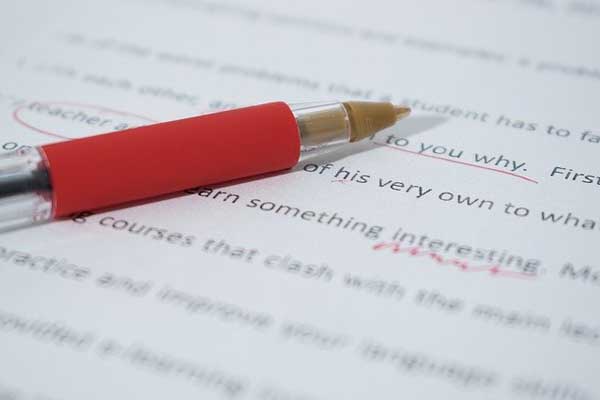
Writing an exceptional essay requires more than just honing your writing skills and conducting thorough research. It also demands meticulous proofreading and editing to eliminate errors and typos that can undermine your hard work and hinder you from achieving the high grades you deserve. To help you navigate this crucial aspect of essay writing, we present a concise yet highly effective guide on crafting a remarkable essay that will captivate your readers and earn you accolades.
Break Free from Conventional Rules
While rules regarding punctuation, such as semicolons and commas, have their importance, fixating too much on them can blind you to other errors. Once you believe you have finished editing, set aside the rules momentarily and give your paper another read-through. Reading your sentences aloud will naturally indicate where commas should be placed. A longer pause without the completion of a thought calls for a semicolon. Remember, it is your essay, and you have the creative freedom to decide where thoughts should pause. Avoid adding unnecessary commas that disrupt the flow of your writing or omitting them entirely, leaving readers breathless. Striking the right balance with punctuation enhances your writing, but excessive usage can lead to confusion.
For example, consider the following sentence:
I went to the store, bought some milk, and then went home.
This sentence is grammatically correct, but it could be improved by adding a comma after “store.” This would make it clear that the thought of buying milk is separate from the thought of going home.
Another way to improve your punctuation is to use semicolons to separate independent clauses. An independent clause is a group of words that can stand on its own as a sentence. For example:
I went to the store; I bought some milk.
This sentence is more concise and easier to read than the previous sentence.
Mind the Hyphens and Dashes
The mighty m-dash, a punctuation mark that replaces the colon, serves to emphatically highlight the words or phrases that follow. However, it should generally be used to set off a clause. To ensure you are employing it correctly, read the sentence parts before and after the dash independently. If they remain coherent and understandable without the dash, you are on the right track.
For example, consider the following sentence:
I went to the store—I bought some milk.
This sentence is grammatically correct, but it could be improved by adding a hyphen after “store.” This would make it clear that the thought of buying milk is an appositive, which is a word or phrase that renames another word or phrase.
Another way to use hyphens effectively is to create compound adjectives. A compound adjective is a group of two or more words that function as an adjective. For example:
I bought some half-and-half.
This compound adjective is more concise and easier to read than the previous sentence.
Verify Abbreviations and Acronyms
In your essay, precision is paramount when using abbreviations and acronyms. Incorrect usage or misspelling can be detrimental to your credibility. Remember, you are likely addressing an audience with specialized knowledge in your subject matter, so be diligent in using the appropriate abbreviations and ensuring accurate spelling throughout.
For example, consider the following sentence:
I went to the DMV to get my driver’s license renewed.
This sentence is grammatically correct, but it could be improved by using the full names of the organizations. This would make it clear to the reader what the abbreviations stand for.
Another way to use abbreviations and acronyms correctly is to avoid using them in the first sentence of a paragraph. This is because the reader may not be familiar with the abbreviation or acronym and may need to stop and look it up.
Crystal Clear Referents
When referring to a specific point or idea in your essay, ask yourself if it is evident which point you are addressing. Take the time to review and clarify all your referents, ensuring that your readers can readily discern what you are referring to in each instance.
For example, consider the following sentence:
The main point of my essay is that editing is important.
This sentence is grammatically correct, but it could be improved by adding a referent for the word “editing.” This would make it clear to the reader what the main point of the essay is.
Another way to use referents effectively is to avoid using pronouns that are ambiguous. For example, the pronoun “it” can refer to a variety of things, so it is important to make sure that the referent is clear.
Active Voice for Engaging Writing
While passive voice has its place in writing, strive to use it judiciously. Overusing passive voice can diminish the impact and clarity of your arguments. Aim for an engaging and active writing style that keeps your readers captivated.
For example, consider the following sentences:
The ball was thrown by the boy.
The boy threw the ball.
The first sentence is in the passive voice, while the second sentence is in the active voice. The second sentence is more engaging and easier to read.
Another way to use active voice effectively is to avoid using unnecessary modifiers. For example, the following sentence is in the passive voice:
The report was carefully written by the student.
This sentence could be improved by using active voice:
The student carefully wrote the report.
This sentence is more concise and easier to read.
Choose Underlining or Italics, Not Both
Underlining and italicizing serve the same purpose of highlighting text. Using both simultaneously is akin to a double negative, creating confusion. If you underline an italicized phrase, you are essentially asking readers to disregard the underlining. Avoid this redundancy and choose either underlining or italics to emphasize your intended message.
For example, consider the following sentence:
The word “important” is only italicized.
This sentence is grammatically correct, and it is improved by using only one form of emphasis. This makes it clear to the reader that the word “important” is the focus of the sentence.
Another way to use emphasis effectively is to avoid using it excessively. Too much emphasis can make your writing look cluttered and unprofessional.
In Conclusion
Perfecting the art of essay writing entails more than just the initial draft. Thorough proofreading and editing are essential for ensuring a flawless final product. By adhering to the tips provided in this guide, you will be equipped to transform your essay into a compelling masterpiece that leaves a lasting impression. Remember to incorporate these strategies when editing your essay, and you will be well on your way to academic excellence.
Additional Tips for Editing Your Essay
- · Read your essay aloud. This will help you identify any errors in grammar, spelling, or punctuation.
- · Ask someone else to read your essay. A fresh pair of eyes can often catch errors that you have missed.
- · Use a grammar checker. A grammar checker can help you identify errors in grammar and usage.
- · Proofread your essay multiple times. The more times you proofread, the more likely you are to catch errors.
By following these tips, you can ensure that your essay is free of errors and is a polished piece of writing.


